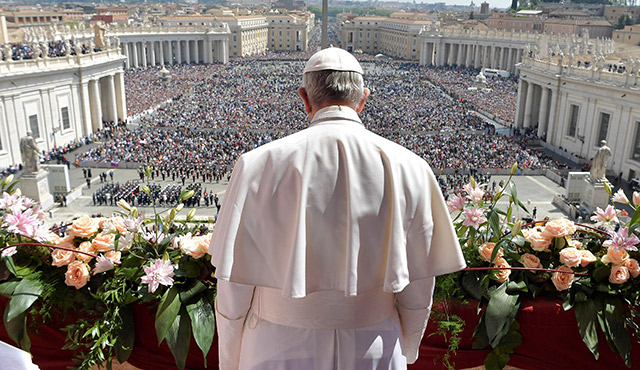Young journalism students learn very quickly that writing a solid, effective news story requires furnishing the “Five W’s”: who, what, when, where and why. These essential elements must be included in the first paragraph, preferably in the first sentence or two.
Budding writers who want who keep a journalism career in their crosshairs must continually apply this unyielding rule until it becomes a part of their DNA. Can’t nail the Five W’s in 30 words or fewer? Then there’s no story and, by extension, probably no future in the news biz.
Oddly, journalism professors never directly mention a sixth question, one that is equally important in constructing an effective story. That elusive question is, “So what?” In other words, why is a given story worth reporting? Why should any reader care?
Which, of course, brings us to the Resurrection of Jesus Christ.
Every Catholic, from fully committed followers to de facto atheists, knows the story: Jesus was arrested, tried and sentenced to be crucified by the Romans. After His crucifixion, He was buried in a tomb, but three days later God raised Him from the dead. Jesus appeared to many people over a 40-day span before He ascended into heaven, to sit at the right hand of God.
Fine. So what?
How does Christ’s triumph over death remain a relevant, fundamental event in today’s high-octane Digital Age? And how can His Resurrection be shared with others in a life-changing manner?
“We can accept the Resurrection as a historical event, and we can also accept it as new life today,” says Msgr. Douglas Cook, rector of Holy Family Cathedral. “It gives us freedom, even now.”
The mortality rate here on Earth is 100 percent, and no amount of money or power can budge the existential dial one micron. But thanks to Jesus’ victory over death through the Resurrection, believers needn’t fear death today, since the fear of punishment after death is lifted.
Believers are forever united with Jesus because of His Resurrection. Through this connection, God does not see our flaws; rather, He sees in us the righteousness of Christ.
We are now able to walk in newness of life because we are bound to Jesus Christ by the Holy Spirit. (Romans 6:4)
The gospel is shown to be true, thanks to the Resurrection. Paul notes that it is both a fundamental part of the gospel as well as the key element that holds every part of the gospel together. Without it, he says, Christians live without hope. Through the Resurrection, however, we have a living hope, today and every day, of having our sins forgiven.
According to His great mercy, He has caused us to be born again to a living hope through the Resurrection of Jesus Christ from the dead, to an inheritance that is imperishable, undefiled and unfading, kept in heaven for you. (1 Peter 1:3-4)
Christ has been described as the “first fruits” of the Resurrection, meaning that His life after death stands as a precursor to what all believers will experience.
For as by a man came death, by a man has come also the Resurrection of the dead. For as in Adam all die, so also in Christ shall all be made alive. (1 Corinthians 15:21-22)
One day, we will be judged and held accountable for the things we’ve done. Nonbelievers will face God’s condemnation and a path to hell. Believers, however, will be rewarded in heaven due to their faith and, more importantly, their actions based on faith. The Resurrection of Jesus points to this gift for all who believe and act accordingly.
Now here’s the tricky part: How can a person of faith explain all of this, particularly to a nonbeliever who is at least willing to listen?
Another key element in journalism – one that applies to in-depth features and creative nonfiction – comes to mind: “Show, don’t tell.” In other words, writers must produce feature-story content by painting tangible, vivid pictures. (Example: “He drove away” doesn’t hold a candle to, “His candy-apple Mustang cruised up the oak-lined street.”)
Fine. So what?
The difference between telling and showing is far more important when presenting the story of Christ’s Resurrection to nonbelievers or those who’ve never even heard of the event.
“We can present the Resurrection to others by, first of all, showing them how we live by making [the discussion about] our lives and our connection with the Lord Jesus,” says Msgr. Cook. “Through the Resurrection, we can reflect on the Lord’s mercy – how new things are possible, how the old is put aside and how we can live differently.”
In other words, go ahead and talk about it – explain all of the Five W’s and more – as long as you show all those listening how the Resurrection works through your life, today and forever.
After all, Msgr. Cook says, “Without it, we’re nothing.”

